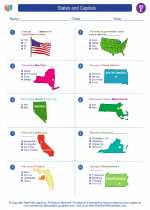Climate
Climate refers to the long-term patterns of temperature, precipitation, humidity, wind, and other atmospheric conditions in a specific region. It is different from weather, which refers to the short-term atmospheric conditions at a specific time and place.
Factors Affecting Climate
Several factors influence the climate of a region, including:
- Latitude: The distance from the equator affects the amount of sunlight a region receives, which in turn influences its temperature and climate.
- Altitude: Higher altitudes generally have cooler temperatures due to the decreased atmospheric pressure.
- Proximity to Water Bodies: Regions near oceans or large bodies of water tend to have milder and more moderate climates compared to inland areas.
- Wind Patterns: Prevailing wind patterns can bring specific weather conditions to a region, such as dry desert winds or moist oceanic winds.
- Ocean Currents: Ocean currents can influence the temperature and humidity of coastal regions.
- Topography: The physical features of the land, such as mountains and valleys, can affect local climate patterns.
Types of Climate
There are several major types of climate, including:
- Tropical Climate: Characterized by high temperatures and heavy rainfall, typically found near the equator.
- Desert Climate: Extremely dry and hot conditions with little precipitation, often found in arid regions.
- Temperate Climate: Moderate temperatures and distinct seasons, found in many parts of the world away from the equator.
- Polar Climate: Extremely cold temperatures and minimal precipitation, found near the Earth's poles.
- Mountain Climate: Varied climate conditions based on altitude, with colder temperatures at higher elevations.
Impact of Climate on Human Activities
Climate has a significant impact on human activities, including agriculture, transportation, construction, and overall quality of life. Understanding the climate of a region is crucial for making informed decisions about land use, resource management, and infrastructure development.
Study Guide Questions
- What is the difference between climate and weather?
- Explain how latitude influences climate.
- How do ocean currents affect coastal climate?
- Describe the characteristics of a desert climate.
- Why is it important to consider climate when planning agricultural activities?
These study guide questions can help you review and understand the key concepts related to climate. Good luck with your studies!
[Climate] Related Worksheets and Study Guides:
.◂Social Studies Worksheets and Study Guides Fifth Grade. States and Capitals

 Worksheet/Answer key
Worksheet/Answer key
 Worksheet/Answer key
Worksheet/Answer key
 Worksheet/Answer key
Worksheet/Answer key
